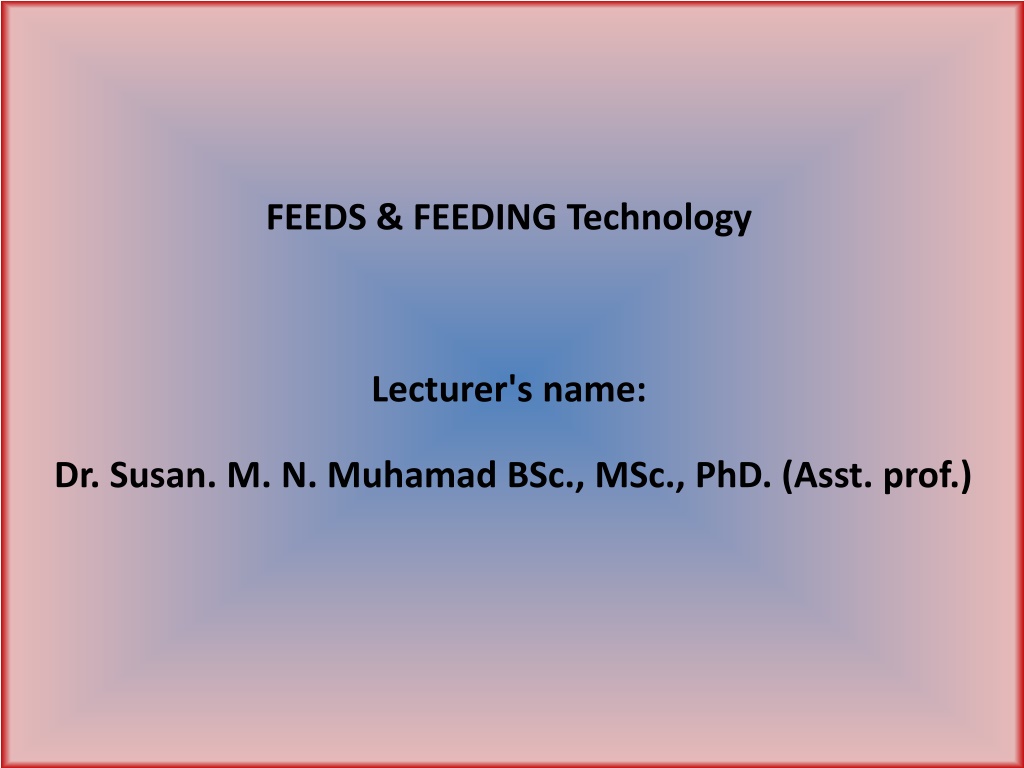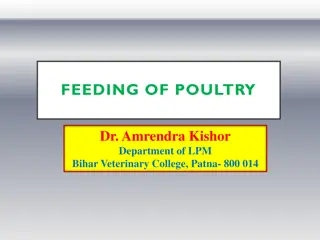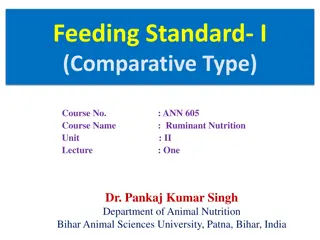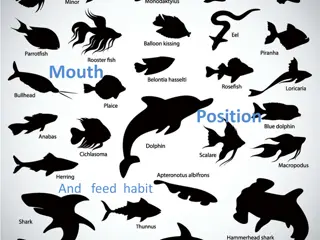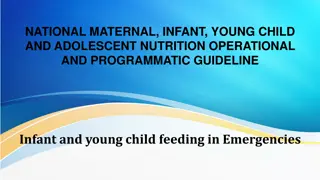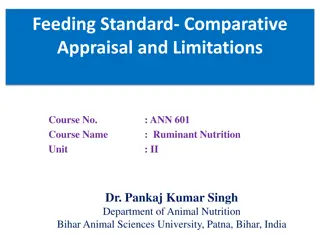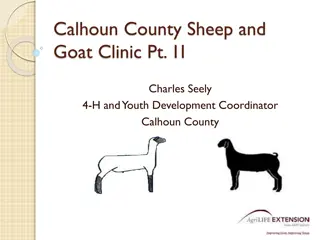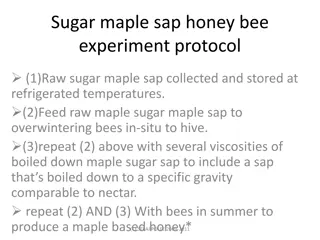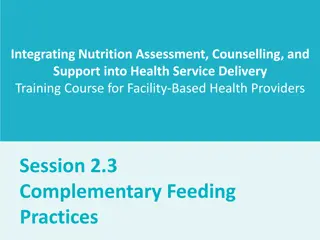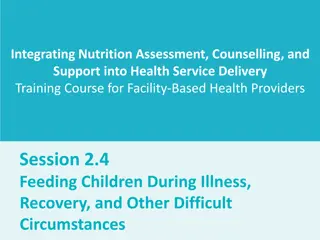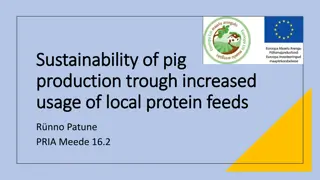Understanding Feeds and Feeding Technology in Animal Production
Feed plays a crucial role in animal production systems, constituting a significant portion of production costs. Dr. Susan M. N. Muhamad, a dedicated lecturer, enlightens students on feedstuffs classification, nutritive characteristics, and practical feeding strategies. This course delves into the importance of providing animals with a balanced diet to support optimal growth and performance.
Download Presentation

Please find below an Image/Link to download the presentation.
The content on the website is provided AS IS for your information and personal use only. It may not be sold, licensed, or shared on other websites without obtaining consent from the author. Download presentation by click this link. If you encounter any issues during the download, it is possible that the publisher has removed the file from their server.
E N D
Presentation Transcript
FEEDS & FEEDING Technology Lecturer's name: Dr. Susan. M. N. Muhamad BSc., MSc., PhD. (Asst. prof.)
Course overview: Numerous different products have been used from time over the years for feeding purposes. However, a relatively limited number of their products make up the bulk of the nations feed supply. Feeds of many origins, qualities, and availabilities are used in animal diets in the world. The nutritive content varies tremendously among them.
Feed represents a major cost in any intensive system of animal production. Even with sheep, which typically consume more roughage (as a percentage of their diet) than other domestic species. Feed may represent 55% or more of total production cost. A value of 75-80% might be more appropriate for poultry.
Thus, it is imperative to supply an adequate diet (in terms of nutrient content) and to prepare and present the ration in a manner that will encourage consumption without excessive feed wastage. The proper feeding of livestock is, for the most part, a matter of supplying them with the right amounts of those chemical elements and compounds essential for carrying on the different life processes.
Course objective (Theory): 1- Describe how feedstuffs are classified and identify the major categories of feedstuffs and their characteristics. 2- Identify the nutritive characteristics in various feedstuff categories
Assessment scheme Theoretical (65%) + Practical (35%)=100% Theoretical (65%) 15% (Monthly Examination) 50% (Final Examination) Practical (35%) Monthly Examination
The Topics: Introduction, The evaluation of feedstuffs General Functions of Feed Nutrients Classification of Feedstuff Feedstuff categories Characteristics of feedstuff The Measurement of Nutritive Value Digestibility (Digestion and Feeding Trials) Some Grazing Tips Feed blocks Feedstuff Energy. Mineral and Vitamin supplements. Feed preparation and processing. Balancing Rations Physical appearance.
Introduction Animal feed : Food of domestic animals comprising any naturally occurring ingredient or material fed to animals for the purpose of maintenance, growth and development.
There are two basic types: fodder and forage. Used alone, the word feed more often refers to fodder. Animal feed is an important input to animal agriculture, and is frequently the main cost of the raising or keeping of animals. Farms typically try to reduce cost for this food, by growing their own, grazing animals, or supplementing expensive feeds with substitutes, such as food waste like spent grain from beer brewing.
Animal wellbeing is highly dependent on feed that reflects a well-balanced nutrition. Some modern agricultural practices, such as fattening cows on grains or in feed lots, have detrimental effects on the environment and animals. For example, increased corn or other grain in feed for cows makes their microbiomes more acidic weakening their immune systems and making cows a more likely vector for E.coli.
While other feeding practices can improve animal impacts. For example, feeding cows certain kinds of sea weed, reduces their production of methane, reducing the greenhouse gases from meat production
When an environmental crisis strikes farmers, such as a drought or extreme weather driven by climate change, farmers often have expensive manufactured animal feed, which can negatively affect their economic viability. to shift to more
For example, drought reduced the availability of grazing lands caused farmers to sell large portions of their herds. Additionally agriculture for producing animal feed puts pressure on land use: feed crops need land that otherwise might be used for human food and can be one of the driving factors for deforestation, soil degradation and climate change.
Forage is a plant material (mainly plant leaves and stems) eaten by grazing livestock. Historically, the term forage has meant only plants eaten by the animals directly as pasture, crop residue, or immature cereal crops, but it is also used more loosely to include similar plants cut for fodder and carried to the animals, especially as hay or silage.
While the term forage has a broad definition, the term forage crop is used to define crops, annual or biennial, which are grown to be utilized by grazing or harvesting as a whole crop.
Diet: A regulated selection of a feed ingredient or mixture of ingredients including water, which is consumed by animals on a prescribed schedule Ingredients.
The evaluation of feedstuffs (1) By chemical composition (2) By animal experiments
Most of data describing the nutrient makeup of feedstuffs are obtained by chemical analysis. For some nutrients and some feeds, this is adequate. But for most feedstuffs, the chemical compositions must be supplemented with figures based on animal utilization-with figures obtainable by biological analysis by experiments, with both farm and laboratory animals.
Experimental animals the most accurate, but the most time consuming and costly, method of determining the value of feedstuff involves live animal trails, using laboratory and/or farm animals. Through such experiments, the digestibility, availability of nutrients, and palatability of a feedstuff can be determined.
Q/ Define the following terms: 1- Diet 2- Forage
